The NVIDIA GeForce RTX 5070 Ti has arrived, offering gamers solid 1440p and 4K performance along with new DLSS technology designed to make gameplay buttery smooth. This is the third graphics card launching as part of the RTX 5000 range, and strangely, the only card thus far that’s launching without a Founders Edition model. Because of this, the only available RTX 5070 Ti models are AIB cards, which means they are notably larger than the FE variant we’re used to seeing. That’s why we’ve put a range of cases to the test, putting them through the wringer to provide the best chassis to pair up with the RTX 5070 Ti.
This series of buyer’s guides provides you with all the knowledge and component recommendations that are great options for the RTX 5070 Ti. In this article, we’ve explored the best PC cases for the RTX 5070 Ti, going into the design, specs, and pricing of each recommendation to provide an overview of the chassis we’ve recommended.
The Best PC Cases for the RTX 5070 Ti
1. Montech King 95 Pro

The first case in this buyer’s guide roundup is the Montech King 95 Pro. We’ve recommended this case many times due to its strong value proposition compared to the rest of the market. This case is so solid for a few principal reasons. The main one is its build quality. The King 95 Pro is a fish-tank-style dual-chamber chassis with a curved glass panel on the side designed to showcase all your components. Around the rear, Montech provides a shroud to cover up all the cable mess, of which there’s plenty of space to route any wires easily enough.
Because the rear chamber is so spacious, you can easily install power extensions without impacting airflow or encumbering the chamber. There are ample cutouts around the motherboard tray to thread through wires, shrouded with rubber grommets. Regarding cooling support, the vast majority of the case is already taken up by six pre-installed fans, leaving the top panel free for additional fans or a liquid cooler, of which the King 95 Pro supports up to 360mm AIOs (all-in-ones).
| Key Specs | Montech King 95 Pro |
|---|---|
| Form Factor | Mid-Tower |
| Motherboard Support | Mini-ITX, Micro-ATX, ATX |
| Case Dimensions (L x W x H) | 475mm x 300mm x 442mm |
| Front IO | 2 x USB 3.0 Type-A 1 x USB Type-C 1 x 3.5mm Microphone Jack 1 x 3.5mm Headphone Jack |
| PCI-E Slots | 7 |
| Max Clearance | 175mm Cooler Height 420mm GPU Length 185mm PSU Length |
| Drive Support | Up to 5 x 2.5 inch Up to 8 x 3.5 inch |
| Fan Support | Top: 3 x 120mm Side: 2 x 120mm Bottom: 3 x 120mm Rear: 1 x 120mm |
| Radiator Support | Top: Up to 360mm Side: Up to 240mm Rear: Up to 120mm |
| Pre-installed Fans | 6 |
There is 420mm of clearance for graphics cards, which is more than enough for the mass of RTX 5070 Ti AIB models. Montech also provides an additional mesh front panel in the accessories box for those concerned about airflow. This can be quickly swapped out for the glass panel, providing better airflow and an alternate look for your build. It’s worth noting that this chassis also comes equipped with a fan and ARGB hub, allowing you to easily wire up fans and coolers without taking up vital space on your motherboard.
My only major criticism of this case is its size. Its dual-chamber design automatically means it will be larger than a traditional ATX tower build. However, the spacious rear chamber makes this case rather sizeable. Furthermore, both glass panels add to the weight, so if you’re the kind of gamer who moves around a lot, we wouldn’t recommend picking up the King 95 Pro.



2. Corsair Frame 4000D

Corsair’s Frame 4000D is making a triumphant return to the market but with a twist. The 4000D has been one of Corsair’s most popular ATX mid-tower cases for years, so it’s no surprise to see it return, but with a revitalised chassis that caters to modern builds. The Frame 4000D features the renowned design qualities that made the original 4000D popular, such as the highly ventilated chassis, a solid cable routing system, and a modern front IO.
The modern design offers some unique differences compared to the original 4000D. This case comes with three 120mm RS ARGB fans pre-installed at the front, providing extra airflow and saving you some money. With the fans supporting the 3-pin ARGB standard, it makes them incredibly easy to sync up to other RGB components. Corsair has introduced a mounting system they refer to as InfiniRail, which accommodates larger fans (up to 200mm) by simply adjusting the width of the rails, which is a unique way of offering more fan space.
| Key Specs | Corsair Frame 4000D RS ARGB |
|---|---|
| Form Factor | Mid-Tower |
| Motherboard Support | Mini-ITX, Micro-ATX, ATX, E-ATX |
| Case Dimensions (L x W x H) | 490mm x 239mm x 486mm |
| Front IO | 2 x USB 3.2 Gen1 Type-A 1 x USB 3.2 Gen2 Type-C 1 x 3.5mm Combo Jack |
| PCI-E Slots | 7 (3 Vertical) |
| Max Clearance | 170mm Cooler Height 430mm GPU Length 220mm PSU Length |
| Drive Support | Up to 2 x 2.5 inch Up to 2 x 3.5 inch |
| Fan Support | Top: 3 x 120mm Front: 3 x 120mm Side: 3 x 120mm Bottom: 2 x 120mm Rear: 1 x 140mm |
| Radiator Support | Top: Up to 360mm Front: Up to 360mm Side: Up to 360mm Rear: Up to 140mm |
| Pre-installed Fans | 3 |
Additionally, the Frame 4000D offers huge space for fans, up to twelve in total, along with 430mm of clearance for graphics cards. Furthermore, the Frame 4000D is highly modular, offering a plethora of removable panels to access all of your components. Corsair also provides alternative front panel designs for those wanting to spice up the design a bit more.
The main caveat in this case is its design. As much as I can appreciate the more traditional ATX style of case, this particular model is pretty simplistic. This isn’t to say the aesthetic is bad, but the Frame 4000D is more of a minimalist chassis, which won’t appeal to everyone.



3. APNX V1

The APNX V1 is the last PC case in this buyer’s guide we’ll recommend. This unique chassis is from APNX, owned by AeroCool, a manufacturer well-known for its budget cases. The V1 chassis is a dual-chamber case with an angular side panel, akin to the HYTE Y60 that was released back in 2022. The angled side panel offers a unique look, especially with the wooden accents, but it also provides better airflow for the components inside.
The APNX V1 is heavily ventilated, with mesh panelling on the top, rear, and side, which significantly assists thermals. Because this is a fish-tank-style case, there are tempered glass panels on the front and side, offering an unhindered window into your build, showcasing all the parts inside. This case provides ample space for modern components, with 395mm of clearance for long graphics cards and room across the front, top, and bottom panels for 360mm radiators.
| Key Specs | APNX V1 |
|---|---|
| Form Factor | Mid-Tower |
| Motherboard Support | Mini-ITX, Micro-ATX, ATX |
| Case Dimensions (L x W x H) | 500mm x 290mm x 485mm |
| Front IO | 2 x USB 3.2 Gen1 Type-A 1 x USB 3.2 Gen2 Type-C 1 x 3.5mm Combo Jack |
| PCI-E Slots | 7 |
| Max Clearance | 170mm Cooler Height 430mm GPU Length 220mm PSU Length |
| Drive Support | Up to 6 x 2.5 inch Up to 2 x 3.5 inch |
| Fan Support | Top: 3 x 120mm Side: 3 x 120mm Bottom: 2 x 120mm Rear: 1 x 120mm |
| Radiator Support | Top: Up to 360mm Front: Up to 360mm Side: Up to 360mm Rear: Up to 120mm |
| Pre-installed Fans | 2 |
This case offers a couple of unique features worth noting. The first is adjustable motherboard mounting, which allows you to install a thicker radiator or a radiator with a push/pull fan configuration. The storage bracket at the rear of the case also provides a streamlined way to install SATA drives without hindering cable management.
The biggest weakness of the APNX V1 is its size, much like the Montech King 95 Pro. This is a large and weighty case. Once you’ve fully built your system, this chassis will not be light by any means, and this is only compounded by the glass. And with a large RTX 5070 Ti, this case won’t be light. The dual-chamber design also makes the APNX V1 larger than most traditional ATX towers, which will be cumbersome for those with small desks.



Frequently Asked Questions
How Big is the RTX 5070 Ti?
Unfortunately, with no reference Founders Edition model, the RTX 5070 Ti AIB cards can range from 300mm to 370mm. Most of the cards we’ve tested are large, but all the recommended cases will accommodate this GPU.
Should I Buy Additional Fans?
All of the cases in this buyer’s guide come with fans. However, we recommend buying an extra rear fan if your chassis doesn’t have one to ensure good airflow.
Is Cable Management Important?
It is if you want your build to look tidy. However, the most critical factor is ensuring your wires don’t block airflow


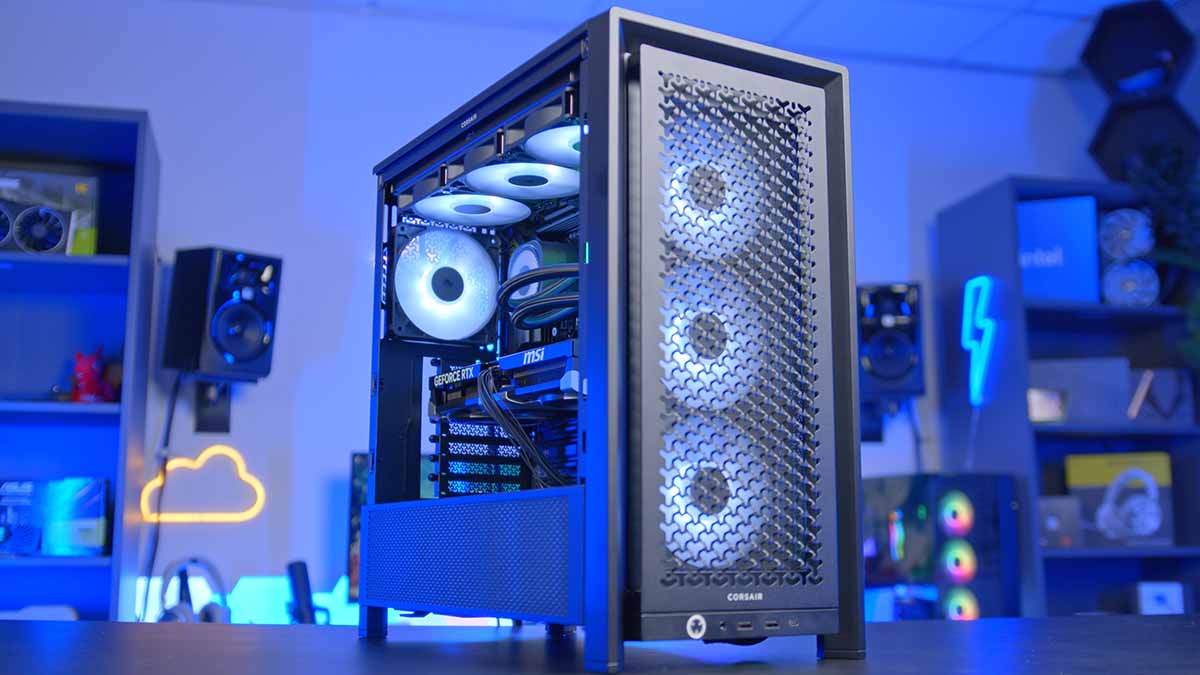
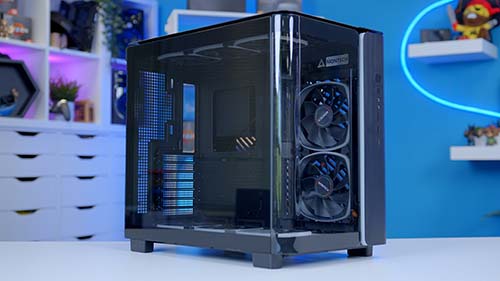
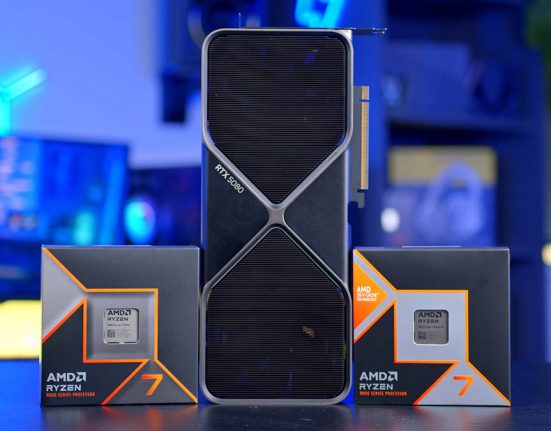
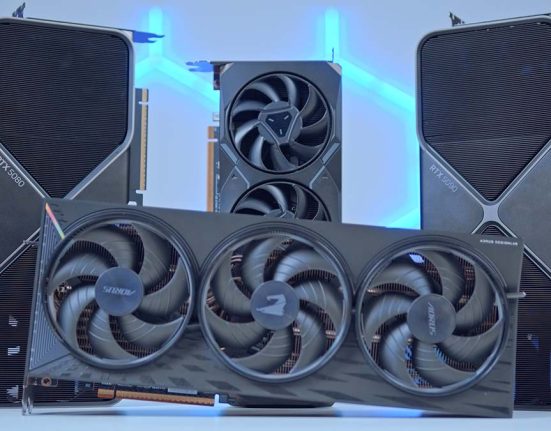
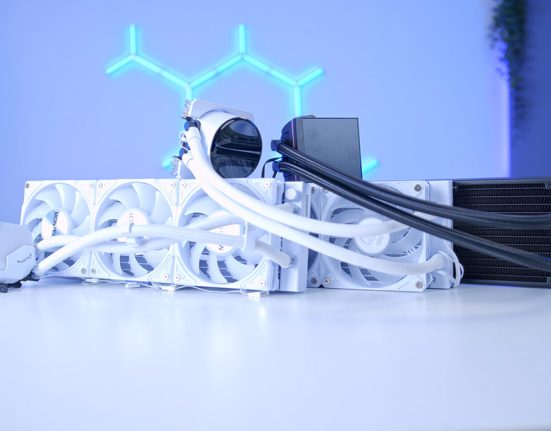

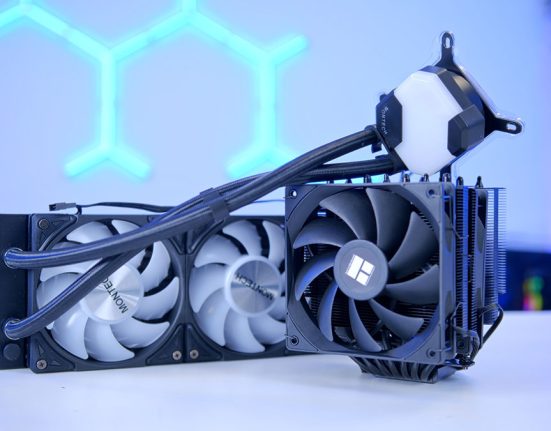
![FI_[DM78] Corsair Air 5400 + 5090 Gaming PC Build](https://geekawhat.com/wp-content/uploads/2025/11/FI_DM78-Corsair-Air-5400-5090-Gaming-PC-Build-551x431.jpg)